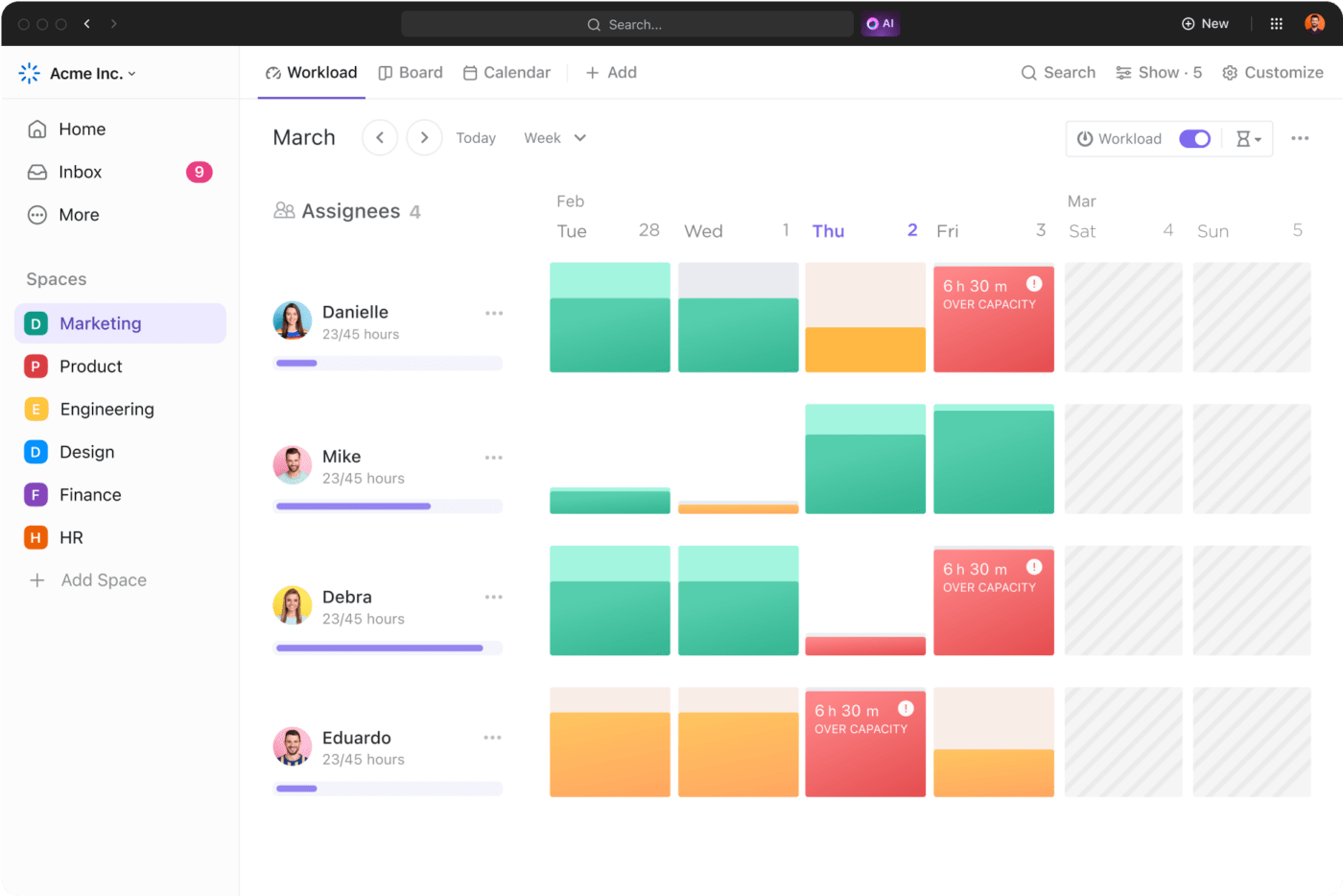Disclaimer: This article is intended to provide information on rust-out and burnout in the workplace. It is not intended to be a substitute for professional medical advice, diagnosis, or treatment of any health condition.
We’ve all heard of burnout, a state of emotional, physical, and mental exhaustion caused by excessive stress.
But have you ever experienced its quieter counterpart?
That creeping feeling of stagnation, where you’re trapped in a routine that no longer challenges or excites you?
This is rust-out, burnout’s lesser-known cousin. While it may seem less intense than burnout, rust-out is just as damaging over time.
Both rust-out and burnout profoundly impact your productivity, mental health, and physical health. The difference? One leaves you feeling overwhelmed and distressed, while the other makes you feel stuck in a rut, unable to find purpose or joy in your day-to-day life.
In this blog, we’ll explore the differences between rust-out and burnout, examine how each condition impacts well-being, and offer tips on how to overcome them.
Understanding Rust-Out
Rust-out happens when your work becomes so uninteresting that you turn indifferent and lose interest in it completely. It is marked by boredom, lack of engagement, and motivation decay.
Among the many feelings that rust-out evokes, a sense that your skills are underutilized, your creativity is stifled, and your work lacks purpose are common.
Common signs indicative of rust-out include:
- Low energy
- A sense of detachment from your work
- Feelings of frustration or hopelessness
- Poor mental health and potential physical health issues
The impact of rust-out
A significant fact about rust-out is that it disproportionately affects women because of the presence of gender biases.
Many women find themselves in roles that may not fully use their talents or potential due to traditional expectations, workplace discrimination, or societal pressures. The glass ceiling, unequal growth opportunities, decelerated career progression, or being sidelined into less challenging work can create feelings of stagnation and poor mental health.
A McKinsey report highlighted that for every 100 men who are promoted from entry-level roles to manager positions, only 87 women advance to the same level.
Rust-out isn’t limited to a gender or a type of job, however. It occurs in any profession where routine and repetition are prevalent. It’s particularly common in fields where professionals are highly skilled but have little control over their tasks or growth.
This challenge is even more pronounced in high-stakes fields, such as healthcare. A disrupted work-life balance is a key issue, compounded by the lack of consistent resources to support healthcare workers. These professionals often face high stress levels due to irregular and demanding work hours, which only worsens the situation.
A CDC survey conducted in 2022 revealed that 46% of healthcare workers frequently experienced burnout.
Distinguishing Rust-Out from Burnout
Rust-out arises from boredom and underutilization of skills.
For example:
An experienced graphic designer who once thrived on creative challenges might feel disengaged and unmotivated due to repetitive, mundane tasks like minor edits or template-based design requests.
Burnout is caused by prolonged stress and exhaustion.
For example:
A nurse working in a busy hospital becomes physically and emotionally drained from long hours and high-stress demands, which may lead to a diminished passion for patient care.
While burnout and rust-out stem from different causes, they share a few similar symptoms. Both lead to exhaustion and decreased productivity, deteriorating mental health, and a sense of detachment from your job or life in general.
Here are some differences between the two:
| Aspect | Burnout | Rust-out |
| Causes | Overwork, high stress, unrealistic demands | Monotony, lack of meaningful work, underutilization of skills |
| Symptoms | Fatigue, irritability, lack of motivation, potential physical health issues | Boredom, apathy, lack of enthusiasm |
| Work environment | High-pressure, fast-paced, demanding work environment | Repetitive, unchallenging, and minimal growth opportunities |
Common misconceptions around burnout and rust-out
There are many misconceptions surrounding burnout and rust-out.
- Misconception 1: Burnout and fatigue are the same
Fatigue is general tiredness from physical or mental strain, while burnout involves chronic stress, emotional exhaustion, and mental health issues. Much like meeting recovery syndrome, burnout from work impacts work performance and overall well-being.
- Misconception 2: You can cure burnout or rust-out by resting
Both conditions often require more than rest. Burnout needs changes in workload, stress management, and support. Rust-out requires seeking new challenges, professional development, or a change in job role to reignite your engagement and interest.
- Misconception 3: Burnout or rust-out is a personal failure
Experiencing burnout or rust-out does not reflect anyone’s personal inadequacy or failure. Both conditions result from continuous, unresolved workplace issues, employee overload, or personal circumstances that cause overwhelming stress or a lack of engagement.
- Misconception 4: Burnout and rust-out are purely work-related issues
While both conditions are often linked to work environments, they can also occur in personal life. Parents can experience burnout with their kids, and partners can experience it with each other
The Phases of Burnout
Though burnout is often seen as a final event that precedes a dramatic change, like quitting your job, it usually shows symptoms over time. In fact, burnout can last anywhere from a few weeks to years, and recovery depends on circumstances, the severity or stage of the condition, and coping mechanisms.
Understanding the five stages of burnout can help you determine whether you are simply tired or experiencing burnout. It can also help you get an idea of the amount of time your recovery can take. Let’s discuss them:
Stage 1: The honeymoon phase
At the start of a new job or project, you’re likely in the honeymoon phase. You’re driven by excitement and a fresh sense of purpose, making you eager to tackle challenges and embrace new responsibilities.
You will feel a strong commitment to your tasks, and your optimism and motivation will help you overcome initial hurdles in the working environment with relative ease.
Stage 2: Onset of stress
As time progresses, the initial excitement may begin to diminish, giving way to the onset of stress. During this stage, the pressures of your workload or the demands of your role start to take their toll, and you may experience fatigue, irritability, and difficulty managing time.
While this may seem like usual behavior, and you still try to cope by fighting mental fatigue, the increasing stress levels begin to impact your overall well-being and productivity.
Stage 3: Chronic stress
At this stage, the stress becomes your constant companion, and your initial coping mechanisms may no longer work. You may experience severe symptoms, such as heightened anxiety, workplace stress, sleep disturbances, and other mental health issues.
Your personal and professional relationships might begin to suffer. The persistent nature of chronic stress also makes it difficult to maintain high-performance levels.
Stage 4: Burnout
Burnout occurs when the effects of chronic stress culminate in a state of severe physical and mental health issues. You might experience symptoms such as complete fatigue, pessimism, and a strongly negative attitude towards your responsibilities.
Your physical health takes a toll, with symptoms like headaches or gastrointestinal issues possibly emerging. At this stage, you desperately need intervention to avoid further damage.
Stage 5: Habitual burnout
If you don’t take drastic action after stage 4, you’re at risk of entering the chronic stage of burnout. Here, burnout becomes a long-term state and feelings of hopelessness and helplessness become ingrained, affecting one’s overall outlook on life. Withdrawal from both work and personal life is also more pronounced.
Overcoming habitual burnout naturally is difficult, as it demands significant effort and support. Recovery requires substantial interventions such as therapy or a complete overhaul of your work and lifestyle.
Also Read: 10 Ways to Be More Productive at Work
Addressing Rust-Out and Burnout: Roles and Responsibilities
Rush-out is the gradual process of becoming disenchanted and bitter about your job. A crucial aspect of addressing rust-out (and burnout) is understanding their major underlying causes, the biggest of which, expectedly, is job satisfaction.
When you find your work meaningful and engaging, you are less likely to feel overwhelmed by workplace anxiety (which leads to burnout) or bored by routine (which leads to rust-out).
Another aspect of managing these conditions is practicing a consistent, intentional self-care routine. When you prioritize your well-being and make it a practice to devote time and effort to it, it can help reduce the mental health issues associated with both conditions. If necessary, seek help from qualified mental health professionals or career coaches to recover from rust-out and burnout properly.
Ensure you set boundaries, maintain a work-life balance, take regular breaks, get enough sleep, eat a balanced and nutritious diet, and engage in leisure activities that relax and replenish you.
Consider meditating, journaling, or practicing mindfulness. To manage stress, incorporate stress management techniques like deep breathing exercises, regular physical activity, or even time management strategies.
Burnout in healthcare workers
Burnout and rust-out tend to impact healthcare workers disproportionately as the intense demands of the job often lead to physical, emotional, and mental exhaustion.
Long hours, high-stress environments, and the emotional toll of patient care can leave healthcare professionals feeling drained and disconnected. Addressing burnout in this field is essential to ensuring the well-being of both healthcare workers and the patients they care for. On the other hand, the seemingly neverending cycle of workplace challenges, odd hours, and fraught situations can lead to rust-out over the years.
If you’re a healthcare worker, seeking peer support and participating in wellness programs regularly can help. Apart from professional support, consider practicing meditation or mindfulness to manage daily stress.
If you are experiencing rust-out, look for opportunities to expand your skill sets, engage in professional development, and explore new areas within your field.
Rotating duties, mentoring, or participating in research initiatives can reintroduce variety and challenge into your work for higher job satisfaction.
Read More: How to prevent developer burnout?
Managing rust-out and burnout: Practical steps
Apart from the above, here are some steps to manage rust-out:
1. Recognize what you are feeling
The first step to solving anything is acknowledging that you are experiencing it. When you do that, you put yourself in a position where you can actually do something to resolve it.
Be honest with yourself and others about your feelings of disengagement. Consider steps like voicing concerns to your manager, planning your workday to allow for exciting work as well as downtime, and more.
Speak with your manager about reshaping your role or consistently seeking work that offers variety and fulfillment. If you’re feeling rusty, work with your supervisor to do things that pique your interest and make work meaningful again.
2. Identify your values
It is always best to spend time reflecting on what truly matters to you in your work and life. Aligning your daily activities with your core values helps foster a sense of purpose, reducing the likelihood of feeling unchallenged or disengaged.
Understanding your value helps you determine how many hours you should work and how many hours you should spend on hobbies. It will also help you engage in activities that spark your curiosity and passion, both inside and outside of work.
3. Monitor your stress
Stress is often the precursor to burnout, so it’s important to monitor it regularly. Pay attention to physical, emotional, and behavioral signs like headaches, irritability, trouble sleeping, or difficulty concentrating.
Track your stress levels through journaling, mindfulness, or self-reflection. This will help you notice patterns and intervene before they become overwhelming.
4. Set boundaries
Setting boundaries is essential for protecting your energy and mental health. Learn to say no to tasks or commitments that overwhelm you, and ensure that your work hours don’t spill into your ‘me’ time.
Clear communication with colleagues, supervisors, or family members about your limits will help create a more balanced life. Setting healthy boundaries allows you to dedicate focused time to work while also giving you the space to recharge.
5. Get professional help
If your feelings of exhaustion, disengagement, or frustration persist despite your best efforts, it might be time to seek professional help.
Therapy can offer a structured path to recovery, helping you identify the root causes of your challenges and develop coping mechanisms. It provides a safe space to address stress, emotional exhaustion, and feelings of inadequacy or disenchantment. Therapy also helps you reconnect with your sense of purpose and rediscover what motivates you.
6. Use tools to manage workloads better
While burnout and rust-out don’t solely occur due to work, your workload and work environment do play a significant role. Therefore, it’s essential to manage your work. Using prioritization tools can help you do this.
ClickUp is a free project management tool that helps you improve your productivity, prioritize tasks better, and reduce anxiety. With ClickUp’s intuitive features, manage your workload in a way that helps you take regular breaks and maintain a work-life balance while ensuring your deadlines are met.
Hear what Michael Turner, Associate Director of Miami University, says about ClickUp:
Boost your workflow and job satisfaction with ClickUp
Here are some of ClickUp’s features that can help:
15+ Customizable Views
ClickUp offers 15+ customizable views to view and organize your work.
These two views, however, can help you plan your work better:

- ClickUp’s Workload View visualizes the capacity of each person overwhelmed with work. Apart from setting your capacity, it helps you add time estimates and priorities to tasks and allocate additional resources wherever necessary

- ClickUp’s Calendar View helps you visualize all the work you have to do. Reschedule tasks easily with drag and drop, set downtimes while managing deadlines, sync your calendar with Google Calendar, and set reminders never to miss an event. This clear visualization helps reduce anxiety and uncertainty
ClickUp Docs

Whether you want to journal your thoughts, make checklists, or write work reports, ClickUp Docs does it all. It is the perfect writing partner that can be customized to suit any type of work with endless formatting options.
Collaborate with your team, connect Docs to tasks, and keep work organized without any issues. Moreover, if you use Docs for journaling, know that it offers comprehensive privacy and edit controls, ensuring your private thoughts remain exactly that.
Set task priorities

Setting priorities is essential to manage, mitigate, and even prevent burnout and rust-out. ClickUp’s Task Priorities can help you plan your next steps. It offers four task priorities: urgent, high, normal, and low.
You can sort each task by priority, add time estimates, and create a comprehensive plan of action.
Templates
From task list templates to workload templates, ClickUp has something for everything.
ClickUp’s Employee Workload Template helps you gauge your and other team members’ capacity and assign tasks accordingly. You can set clear expectations for everyone, ensuring neither you nor your employees experience burnout.
The template offers five Custom Views, like Team Workload, Team Board, Tasks, and Individual Workload, and several Custom Fields, to enhance collaboration and clarity.
ClickUp Reminders
ClickUp Reminders help you stay on top of your work priorities. Set reminders, add attachments, dates, and recurring schedules, so you never have to deal with the worry that you’ve forgotten something important.
With ClickUp, you can set reminders to take regular breaks, even during a hectic workday. This will help you prioritize your mental health better.
Prevent Rust-Out and Burnout with ClickUp
Whether you’re feeling disengaged and stagnant or overwhelmed and exhausted, recognizing the signs early is crucial to preventing further harm.
Addressing these issues requires a proactive approach, including self-care, setting boundaries, and seeking purpose in your work.
To stay organized and avoid falling into either rust-out or burnout, try ClickUp—a powerful tool for managing tasks, balancing workloads, and keeping track of what matters most.
Take control of your workday, start managing your responsibilities more effectively, and put yourself and your team first by signing up for ClickUp!
FAQs
1. How do I know if I am burned out?
You may be burned out if you feel persistently exhausted, emotionally drained, cynical about work, and less effective despite your efforts.
2. What is the difference between being tired and burning out?
Tiredness is temporary and resolves with rest. Burnout is chronic, resulting from prolonged stress, and includes emotional exhaustion and feeling ineffective at work.
3. Am I burned out or just lazy?
Burnout is not laziness. If you were once motivated but now feel unable to perform due to exhaustion and stress, you may be burned out. Laziness lacks the emotional and physical toll that comes with burnout.
4. How long does burnout last?
Burnout can last from weeks to years, depending on its severity and the steps taken to address it.
5. How long does burnout take to recover?
Recovery can take several weeks to months, sometimes longer, depending on the level of burnout and the interventions used, like therapy, lifestyle changes, or job adjustments.
6. Can you be burned out without knowing?
Yes, burnout can develop gradually, and many people may not recognize it immediately, mistaking it for regular tiredness or workplace stress until the symptoms become overwhelming.





